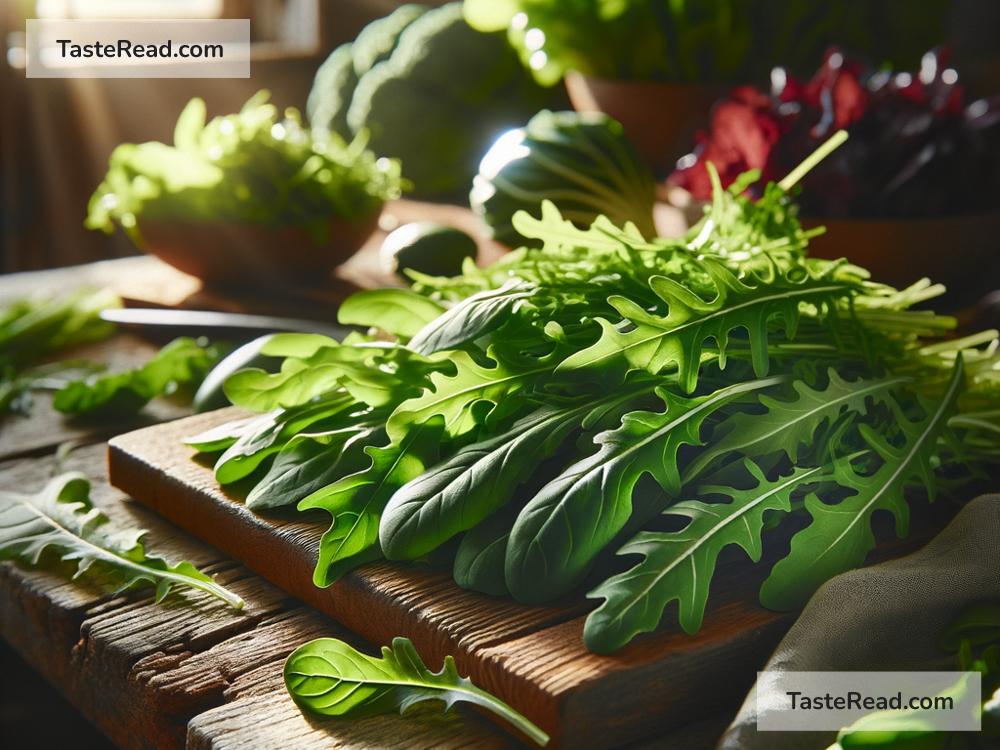Why Arugula Has a Peppery Flavor: Unveiling the Mystery of the Zesty Green
Arugula, the feisty little leaf with a big personality, is a favorite of food enthusiasts who love its bold, peppery bite. It’s no ordinary lettuce—it adds a unique spice to salads, sandwiches, pizzas, and more. But have you ever wondered why arugula tastes peppery? What gives this leafy green its distinctive zing? Let’s dive into the fascinating science behind arugula’s flavor and learn why it stands out among leafy greens.
What Is Arugula?
Before we get into the science, let’s quickly talk about what arugula is. Arugula (pronounced ah-ROO-guh-luh) is a leafy green with a long history in cooking. Native to the Mediterranean and cultivated for centuries, this vibrant plant is also known by names like rocket, rucola, or roquette in different parts of the world.
Arugula belongs to the Brassicaceae family, which includes other veggies like kale, mustard greens, broccoli, and cabbage. While it’s small in size, arugula is big on flavor—so much so that some people find it intense or even overpowering. Its peppery taste makes it both loved and disliked, depending on your palate.
What Makes Arugula Peppery?
The secret to arugula’s peppery flavor lies in its natural chemistry. Arugula contains special compounds called glucosinolates and their byproducts, isothiocyanates, which are responsible for its spicy, pungent taste. These are the same compounds that give mustard, horseradish, and wasabi their signature kick.
When you bite into arugula, the glucosinolates interact with enzymes in the leaves, creating isothiocyanates. These substances activate taste receptors in your mouth, creating that sharp, peppery sensation. This reaction is nature’s way of protecting the plant—its strong taste deters animals and insects from eating it. But for humans, the flavor can be quite appealing, adding complexity and character to dishes.
Why Does Arugula Taste Spicier Sometimes?
Not all arugula tastes the same, and its peppery intensity can vary depending on how it’s grown. Factors like soil quality, sunlight, temperature, and water levels all play a role. Here are some variables that influence arugula’s flavor:
1. Growing Conditions
- Arugula grown in cooler temperatures tends to have a milder flavor.
- Warmer weather can intensify its spicy taste.
- Plants grown in nutrient-rich soil often have a more balanced and rich flavor profile.
2. Harvest Time
- Younger arugula leaves are mild and tender.
- Mature leaves are spicier and have a stronger peppery taste.
3. Water Availability
- Arugula that receives plenty of water tends to taste less spicy.
- Drought-stressed plants can develop more concentrated flavors.
These factors explain why arugula from one batch may taste mellow, while another pack might hit your tongue with a peppery punch.
Is Arugula Healthy?
Yes, arugula isn’t just tasty—it’s also packed with health benefits. Those glucosinolates that create its peppery taste are also beneficial to your body. Research suggests they may help protect against certain diseases, including cancer, by promoting detoxification in the body. Arugula is also high in vitamins A, C, and K, as well as minerals like calcium and potassium. It’s low in calories, making it a great choice for those looking to eat nutrient-rich foods without overloading on calories.
How Can You Use Arugula in Cooking?
Arugula’s bold flavor makes it a versatile ingredient in the kitchen. Whether you want to highlight its spiciness or balance it with other flavors, there are plenty of ways to enjoy this zesty green.
1. In Salads
Combine arugula with sweet fruits like strawberries or pears, creamy cheeses like goat cheese, or nutty toppings such as walnuts. A drizzle of honey or balsamic vinegar can perfectly complement its spicy taste.
2. On Pizza
Fresh arugula is a popular topping on pizzas. Its peppery bite contrasts beautifully with savory cheeses, salty meats, or roasted veggies.
3. In Sandwiches
Swap lettuce for arugula to add a layer of peppery sophistication to your sandwich or burger.
4. In Pasta Dishes
Toss a handful of arugula into warm pasta for a fresh, spicy twist. Pair it with garlic, olive oil, Parmesan, or lemon juice for a flavorful combo.
5. As a Garnish
Sprinkle arugula on soups, roasted meats, or grain bowls to add a pop of flavor and color.
Who Likes Arugula?
Arugula’s peppery flavor isn’t for everyone, but that’s part of its charm. If you love bold, spicy flavors, arugula is likely a favorite of yours. If you’re new to it, start by mixing small amounts of arugula with milder greens like spinach or lettuce to ease into its flavor. Remember, the peppery taste can grow on you the more you eat it!
Final Thoughts
Arugula is a leafy green with a story to tell. Its peppery flavor comes from glucosinolates and isothiocyanates—natural compounds that protect the plant and delight adventurous eaters. Whether mild or spicy, arugula is a versatile ingredient that adds a distinctive kick to dishes and packs a healthy punch. So next time you enjoy arugula, take a moment to appreciate this feisty green’s unique flavor—and the amazing chemistry behind it!


